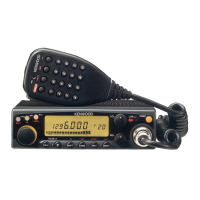7-3 IN CASE
OF
DIFFICULTY
The problems described in this table are failures caused, in general,
by
improper operation or connection of the
transceiver,
not
by
defective components. Check according
to
the
following
table.
Symptom
I
Probable cause
i
Correct've act1on
Indicators
do not light and no receiver noise is
1
1.
Bad
power cable or connections.
11.
Check cables and connections.
heard when the
POWER
switch is turned
on.
; 2.
Blown
power supply fuse.
2 Check
for
the cause
of
the
blown fuse
and replace the fuse.
r----·
..
·-·--·-·---·-
-~·-·-·-·-·-·-·---·-·
No sound from the speaker. No signal can
be
1
L SqueJc:, is closed.
.1.
Turn the
S%L
control
counterclockwise.
received. i
2.
With the TSU·6:
CTCSS
is
operating.
i2
Press the T NE/T.ALT key to turn
offthe
CTCSS.
1--
..
! 1
!1.
-------~----
No
transmitter
output.
I .
Microphone is
not
plugged in.
Plug
jack
in
..
. 2.
Poor
antenna connection.
I
vu""~'
antenna securely.
Weak signal cannot
be
received.
I
P,
a""""'
1a
connection. 1 (.;<.,'""'"''antenna securely.
Display is dark
.1.
Power
voltage
is low.
!1.
Check
voltage
for
13.8
VDC ±
15
%.
12.
The
DIM
had
been
selected too dark.
.
2.
Press the F key and the LOW
/DIM
key.
I
Seepage48
Memory
cannot
be
backed up.
1
Back up
battery
voltage
is
low.
See
Microprocessor memory backup page 21.
The display will
not
change when the
tuning
:
1.
The
Jock
IS
on.
11.
Press the
MHz/LOCK
key
within
ten
control is rotated or a key is pressed.
i 2.
A.
LOCK is on.
!
seconds
of
pressing the F key.
2.
Hold down the
MHz/LOCK
key, switch
i
the
power on, then
perform
the opera·
'
I
tion in
1.
51
,

